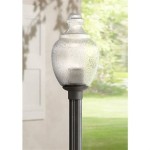Is An Outdoor Wood Boiler Worth It? A Comprehensive Analysis
The question of whether an outdoor wood boiler (OWB) is a worthwhile investment is complex, hinging on various factors including initial cost, fuel availability, maintenance requirements, and individual heating needs. OWBs, also known as outdoor wood furnaces, offer an alternative heating solution, primarily designed to heat homes and other buildings using wood as the primary fuel source. This analysis will delve into the advantages, disadvantages, and crucial considerations to determine if an OWB aligns with your specific circumstances.
An OWB functions by burning wood in a firebox located outside the building it heats. The heat generated is then transferred to water, which is circulated through insulated underground pipes to a heat exchanger inside the building. This heat exchanger then provides warmth through the existing central heating system, whether it be forced air, radiant floor heating, or hot water radiators. The system offers a degree of separation between the burning process and the living space, potentially reducing indoor air quality concerns associated with traditional wood stoves.
The decision to invest in an OWB is a significant one, requiring careful assessment of several key areas. Understanding these elements will allow for a more informed decision regarding the long-term viability and economic sense of this heating method.
Initial Cost and Long-Term Savings
The upfront cost of an OWB represents a major investment. This includes the cost of the boiler itself, typically ranging from several thousand to tens of thousands of dollars depending on size, features, and manufacturer. Installation costs further contribute to the initial expense, encompassing the underground piping, heat exchanger, and necessary electrical connections. Permits and inspections, often required by local authorities, also add to the initial financial burden.
Despite the substantial initial outlay, OWBs can potentially offer long-term savings on heating costs. This potential for savings is highly dependent on the price and availability of wood. If wood is readily available and can be sourced at a low cost, or even free, the savings compared to traditional heating fuels like propane, oil, or electricity can be significant. Conversely, if wood must be purchased at market rates, the cost savings may be diminished or even negated entirely. Future projections on heating fuel costs should also be considered in the analysis.
To accurately assess the potential savings, it's crucial to calculate the annual fuel consumption of the existing heating system and compare it to the estimated wood consumption of an OWB. This requires considering the heating degree days for the specific geographical location and the efficiency ratings of both systems. A thorough cost-benefit analysis, incorporating all associated expenses and projecting fuel costs over the lifespan of the OWB, is essential to determine the financial viability of the investment.
Furthermore, the longevity and reliability of the chosen OWB model have a direct impact on long-term savings. Higher-quality, well-maintained units tend to last longer and require fewer repairs, contributing to a lower overall cost of operation. It's essential to research different brands and models, read reviews, and consider the warranty offered by the manufacturer.
Environmental Considerations and Regulations
The environmental impact of OWBs is a subject of ongoing debate and scrutiny. Older, less efficient models have been criticized for emitting significant amounts of particulate matter, smoke, and other pollutants into the atmosphere. These emissions can negatively impact air quality, posing risks to public health and potentially contributing to respiratory problems. Newer, EPA-certified OWBs are designed to burn cleaner and more efficiently, resulting in reduced emissions. However, even EPA-certified models still produce some level of pollution.
Regulations regarding the use of OWBs vary significantly depending on location. Some areas have outright bans on non-EPA-certified models, while others impose restrictions on installation, operation, and fuel type. Before investing in an OWB, it's crucial to thoroughly research the local regulations and ensure compliance. Operating an OWB in violation of local ordinances can result in fines, legal action, and even the requirement to remove the unit.
Proper wood sourcing and burning practices are also essential for minimizing the environmental impact of OWBs. Burning seasoned (dried) wood is significantly more efficient and produces fewer emissions than burning green or wet wood. Using untreated wood is also critical, as burning treated wood can release harmful chemicals into the air. Sustainable wood sourcing practices, such as harvesting wood from managed forests or using fallen trees, can further reduce the environmental footprint of OWB operation.
Beyond air quality, the overall carbon footprint of using an OWB should also be considered. While wood is often considered a renewable resource, its carbon neutrality depends on responsible forest management practices. If forests are not properly replanted and managed, the carbon emissions from burning wood may not be fully offset by carbon sequestration. Weighing the environmental impact against the convenience and potential cost savings is an essential aspect of the decision-making process.
Maintenance and Operational Requirements
Operating an OWB requires a significant commitment to maintenance and operational tasks. These tasks include regularly loading wood into the firebox, cleaning out ashes, and monitoring water levels. The frequency of these tasks depends on the size of the firebox, the efficiency of the boiler, and the heating demands of the building. Neglecting these maintenance tasks can lead to decreased efficiency, increased emissions, and potential damage to the boiler.
Regular cleaning of the heat exchanger and chimney is also crucial for maintaining optimal performance and preventing potential fire hazards. Creosote, a flammable byproduct of wood combustion, can accumulate in the chimney and heat exchanger, significantly increasing the risk of a chimney fire. Professional cleaning services may be required periodically, adding to the overall cost of operation.
Furthermore, OWBs require a reliable source of electricity to power the water circulation pump and other components. Power outages can disrupt the heating system and potentially lead to freezing of the water lines, especially in cold climates. A backup power source, such as a generator, may be necessary to ensure continuous operation during power outages. The cost and maintenance of a backup generator should be factored into the overall cost of owning an OWB.
The physical demands of operating an OWB should also be considered. Loading wood, removing ashes, and performing maintenance tasks can be physically strenuous, particularly for individuals with mobility limitations. The time commitment required for these tasks can also be significant, especially during periods of high heating demand. Potential owners should honestly assess their physical capabilities and time availability before investing in an OWB.
Finally, the location of the OWB is a crucial consideration. Ideally, the boiler should be located in a well-ventilated area, away from flammable materials and structures. Proper drainage is also essential to prevent water accumulation around the boiler. Adhering to manufacturer's recommendations and local regulations regarding OWB placement is critical for ensuring safe and efficient operation.

Best Outdoor Wood Furnace Central Boiler

Outdoor Wood Burning Furnace Boilers From Madison Wi To E Iowa

Strawbale Farms Blog Outdoor Boilers Solar Electric Wi Mn

Why An Outdoor Wood Burner Is Not A Good Choice For You

Outdoor Wood Burner Is It Worth 4 Years Later

Outdoor Wood Boiler Vs Furnace

Outdoor Wood Burner Is It Worth 4 Years Later

Cleanfire Outdoor Wood Furnaces

Is An Outdoor Wood Burner Worth It 5 Year Review

Outdoor Wood Furnace Review And Guide To Saving Money Rural Living Today
Related Posts







